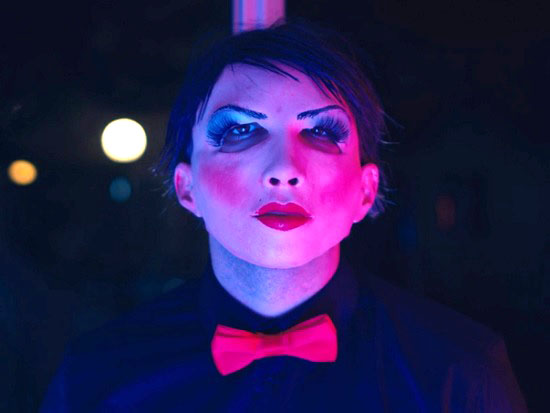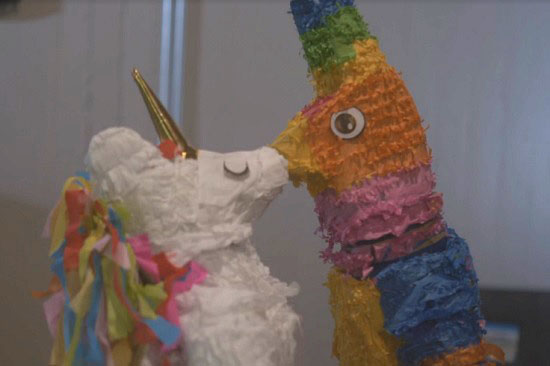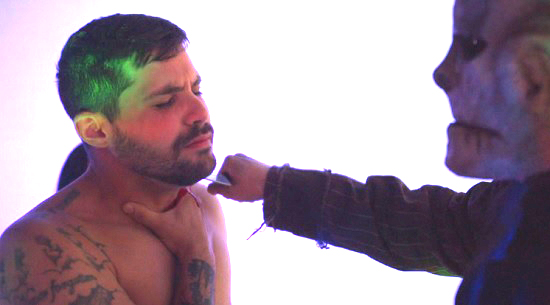Weeding through my streaming service watchlists, I discovered several of the movies were follow-ups to other movies, so clearly a theme for a new post was emerging. Let’s get right into this mish-mosh of movies.
ANTHROPOPHAGUS II (2023)

A movie you never thought would get a sequel gets a sequel. This one goes for the baby eating in the very first scene to remind us why the original 1980 Anthropophagus is so infamous.

But where do go when you begin with the same idea that made the shocker conclusion of the first film so unforgettable? Worse gore and torture porn is all you’re really left with, and that’s exactly what you get.



The plot is basic—a teacher takes her class of female students to a bunker for their thesis. No cellphones allowed, and they need to sleep in the place for 24 hours.

As the girls make themselves comfortable, we are occasionally treated to gruesome scene of victims being tortured in a deformed killer’s lair.

Eventually some of the girls go missing, and the other girls go looking for them. That’s it. That is the plot. Just sit back, enjoy the very Italian horror lighting, and wait for girls to get abducted one by one and brutally mutilated and cannibalized. Nothing scary here. It’s all about the gross-outs.
MASK OF THORN (2019)

I always check out indie director Mj Dixon’s slashers, which are fun and simply throwbacks to 80s horror. This one is a sequel to Thorn from 2014 (also known as Legacy of Thorn), and it doesn’t add much to the plot of the first. So basically, in true 80s slasher style, it just brings in a new group of kids to kill off.


As a backstory to the main girl in this one, it begins in 1972 in a hospital, where our masked killer goes on a murderous rampage while his cult tries to abduct a patient’s newborn child. It’s sort of like the Thorn cult from Halloween 6 infiltrated Halloween II. There’s also a dude who looks like he borrowed Ross’s teenage years look from flashback episodes of Friends…

The movie takes place in the 80s. A teenage girl and her friends break into a school to party, which comes complete with a dancing montage. What’s missing from the 80s slasher formula, however, is sex and nudity. Bummer.

The problem with this installment is that it’s an hour before the killer makes his presence known, but when he does it’s in a big way. The death scenes are violent, there are plenty of chase scenes, and the whole Thorn cult ends up getting in on the fun for the final act.

It’s all completely derivative, and this didn’t expand much on the Thorn legacy, but hey…we also didn’t need 12 Friday the 13th movies or 13 Halloween movies, yet here we are, always guilty of anticipating and hoping for more.
ALL HALLOWS EVE TRICKSTER (2023)

Is this an official sequel to the other All Hallows Eve Halloween horror films or just a cash-in on the name? My guess is the latter, but it doesn’t really matter to me either way, because this one is weird and trippy enough to stand on its own.

The IMDb description for the film offers more of a story for the wraparound than we actually get. What’s happening is barely clear, but basically a girl comes to a gas station and is apparently abducted and locked in a box by inhuman freaks that run the place. Granted we don’t see any of that happen, but the girl is suddenly in a box and forced to watch a television through a peep hole as the stories begin.
1st story – some kids bust into an empty house on Halloween to tell scary stories, and they each offer a different take on what became of the couple that lived there. What’s cool about this tale is that it’s presented as the kids being immersed in the action as unseen spectators.

2nd story – this is where we learn that this anthology has some unapologetically queer content, beginning with two cuties in this story making out in a car, which lands it on the does the gay guy die? page.


This is an open-ended slasher about someone in a very queer mask going on a killing spree on Halloween.

Not much of a story to tell, but the kills are so satisfying and gory. I just wish the film had indulged in its queer aspects to give us a substantial queer horror story.

3rd story – possibly my favorite tale, this one is about a mother who must feed victims to something monstrous in her basement. There’s even a nod to the inspiration for this type of plot when the original Little Shop of Horrors is playing on a television. As with most of the tales here, nothing is explained or clarified in terms of narrative, so you just have to go with it and enjoy the awesome horror elements.

4th story – two cowboys meet a nun in the desert and are then suddenly thrust into a demonic situation.

5th story – the least exciting tale, this one has a dude ruining his former classmates’ lives by doing things like Photoshopping guys kissing other guys and then posting it online. It’s sort of a revenge story, but it’s quite flat.

6th story – the wildest and weirdest tale of the bunch, this is another favorite of mine. A sleazy dude harasses a girl singing karaoke in a bar. When he leaves he encounters a cyclops type of monster that…brace yourself…graphically gives him a rim job before fucking him with its monstrous penis. This is like something I would write in one of my Comfort Cove novels.



Finally, the wraparound has as unclear a conclusion as every story. It’s mostly just a look at all the freaks that dwell in a lair beneath the gas station. Also important to note is that despite the title, only a few of the stories specifically focus on Halloween.
SLASHFM 2 (2023)

Just like the first film, this anthology sequel features an unseen voiceover radio DJ as the host while festive Halloween scenes flash on the screen between episodes.


Despite him telling scary stories on Halloween, not every tale here takes place on Halloween…
1st story – This one occurs at Christmastime! I don’t know how they got away with this or why they even bothered, but this is basically a “remake” of Drew Barrymore’s opening scene in Scream, only it features meta references to that scene, with the killer virtually saying “Yo, bitch! I’m going to kill you Scream style! They even have the killer in the Ghost Face costume!

2nd story – although it’s irrelevant, this one takes place in 1983. It’s as basic as it gets, with a woman home alone when a group of freaks in masks invade. The masked intruders are definitely creepy, but there’s not much to this tale.

3rd story – in this attempt at a farcical tale, two straight-laced dudes use a murder machine on victims. This is another dud for me.

4th story – another tale with little story and no excitement, this one does take place on Halloween. A girl in her trailer home is terrorized by something we never actually see. Plenty of atmosphere here, but the payoff is a letdown.
5th story – I think this is the longest of all the tales, and as result it definitely has something meaty to sink our teeth into. Two dudes are posing as pizza delivery boys to get experience as serial killers, but things go horribly wrong for them when they deliver to a house where the kids have performed a satanic ritual and turned into demons. Awesome.

6th story – this one starts with torture porn and then becomes very stylized art house torture porn with no dialogue and loads of 80s Euro horror lighting.
7th story – this tale about a band entering a battle of the bands turns into a zombie outbreak. Unfortunately, there aren’t enough zombies for this one to really break out.
BRIDE OF THE KILLER PIÑATA (2023)

I’m a big fan of the original and even own it on Blu-ray, but seriously, this is a sequel we just did not need. The joke was taken to its limit in the first movie, and worse yet, this sequel runs an hour and 13 minutes long. What the fuck were they thinking?

It’s cool that the main girl came back, and the sequel gets credit for being very queer, but I struggled to sit through the whole thing. In between campy kills, the film keeps introducing quirky characters and creating backstories to fill the time. Sigh.


Basically, the main girl and her wife have the killer piñata, which just refuses to die, trapped in their basement.

A female piñata comes to life, helps the first killer piñata to escape, and they go on a killing spree.

For me, the best scene involves the little old lady shop owner from the first movie returning and getting into a funny fight.

But that’s not enough to have my OCD kick in, because I feel absolutely no urge to get this film on disc to have a complete Killer Piñata collection.

















































































































































































































